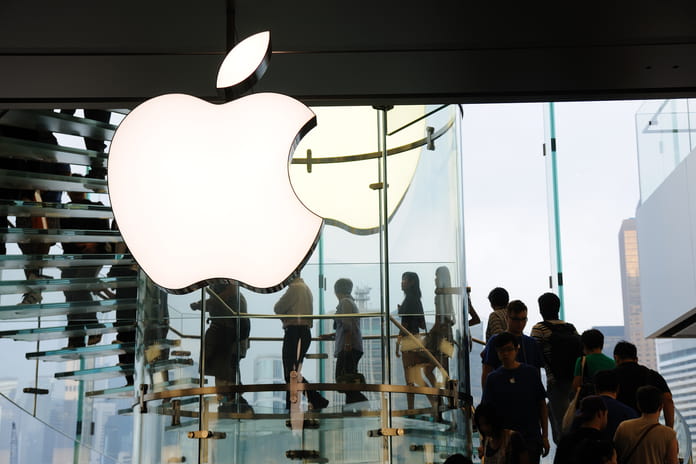Apple Inc. (NASDAQ:AAPL) has long been a beacon of innovation and financial success in the tech industry. Known for its groundbreaking iPhones and robust ecosystem, the company has consistently set benchmarks for market dominance. However, its revenue growth has stalled over the past two years, raising questions among analysts and investors. This stagnation may also explain why Warren Buffett’s Berkshire Hathaway (NYSE:BRK.A)(NYSE:BRK.B) reduced its once-dominant stake in the company.
Apple’s Plateau: A Growth Story Turns Static
Apple’s meteoric rise in the last decade was fueled by consistent revenue increases driven by iPhone sales, global expansion, and ventures into wearables and services. Between 2021 and 2022, Apple’s total revenue soared from $365.8 billion to $394.3 billion. However, the trailing twelve months ending September 30, 2024, show a plateau at $391 billion, nearly identical to the previous year.
The company now faces a saturated smartphone market, with limited room for growth in its flagship product line. Increased competition from Android manufacturers in Asia and evolving regulatory landscapes also threaten Apple’s ability to sustain dominance in its ecosystem-driven business model.
Buffett’s Strategic Shift: What It Means for Apple
Warren Buffett’s Berkshire Hathaway made headlines by trimming its Apple holdings significantly, surprising those familiar with Buffett’s preference for long-term investments in companies with enduring growth potential. At its peak, Apple accounted for over 40% of Berkshire’s equity portfolio, reflecting Buffett’s faith in its ability to innovate and dominate.
However, Buffett’s recent decision to sell a substantial portion of Berkshire’s Apple shares may reflect Apple’s diminished growth prospects. With its core markets nearing saturation and alternative revenue streams like services and wearables not delivering explosive growth, Apple stock may no longer offer the potential returns Berkshire seeks.
Apple’s Diversification: A Work in Progress
To counter slower iPhone sales, Apple has leaned heavily on its services sector, which includes subscriptions and advertising, while experimenting with new technologies. The company’s foray into augmented reality with the Vision Pro headset, however, fell short of expectations. Criticized for its high price and limited features, Apple expects to sell fewer than 400,000 units annually, a far cry from its iPhone-like success.
Similarly, Apple’s rumored electric vehicle project has faced delays and restructuring, further dampening expectations for diversification-led revenue growth. Even iPhone releases have come under scrutiny for introducing minimal updates while increasing price points, a strategy that risks alienating consumers.
Market Vulnerability and High Valuation Risks
The stagnation in Apple revenue growth comes at a precarious time for the tech sector. With valuations across the industry priced for sustained growth, even minor slowdowns can lead to sharp corrections. Apple’s current valuation, nearing $3.5 trillion, amplifies these risks.
Buffett’s decision to reduce Berkshire’s exposure to Apple could reflect a prudent rebalancing in light of these challenges. For a value investor, the combination of plateaued growth and a sky-high valuation may signal reduced opportunities for long-term appreciation.
Conclusion: Apple’s Challenge to Stay on Top
Apple remains a symbol of technological excellence and market leadership, but its current trajectory highlights the difficulty of sustaining growth after reaching monumental success. As Warren Buffett recalibrates his portfolio, investors are left to ponder Apple’s future direction.
Whether through breakthroughs in health tech, augmented reality, or new ventures, Apple must redefine its growth narrative to avoid falling into the “success trap.” For now, the company’s financial plateau is a reminder that even the world’s most valuable companies are not immune to market realities.
As Apple navigates these challenges, it will remain in the spotlight for investors and competitors alike, symbolizing both the rewards and complexities of operating at the pinnacle of the global economy.
Featured Image: Megapixl© Bedo









